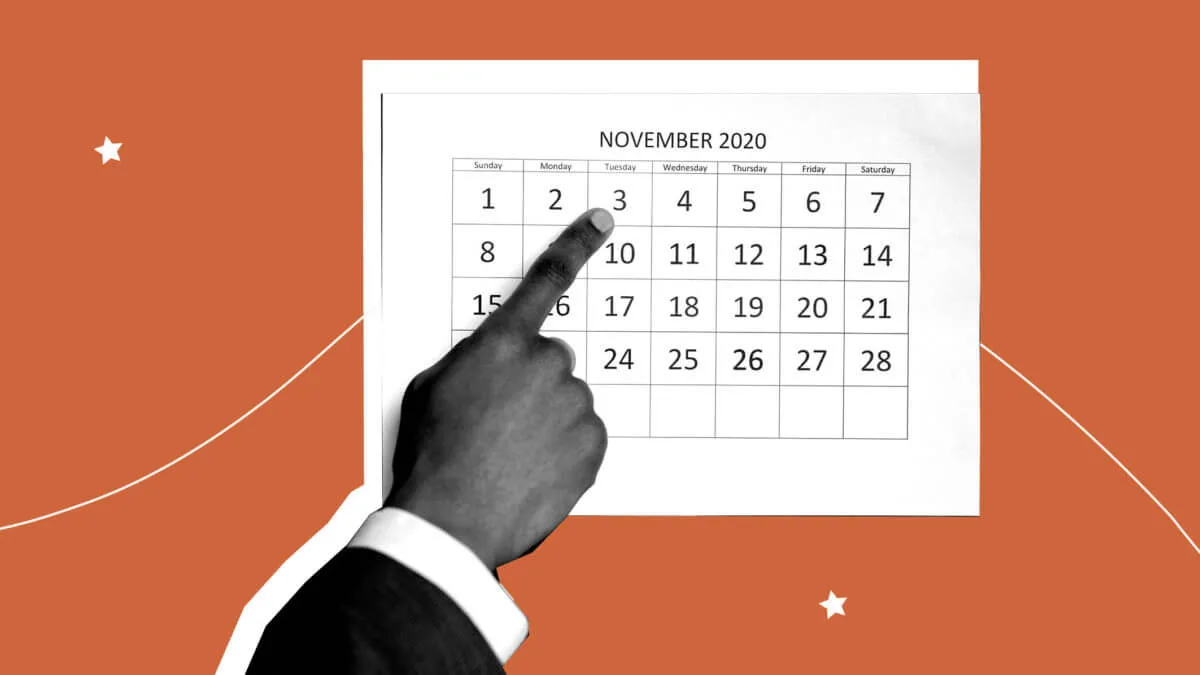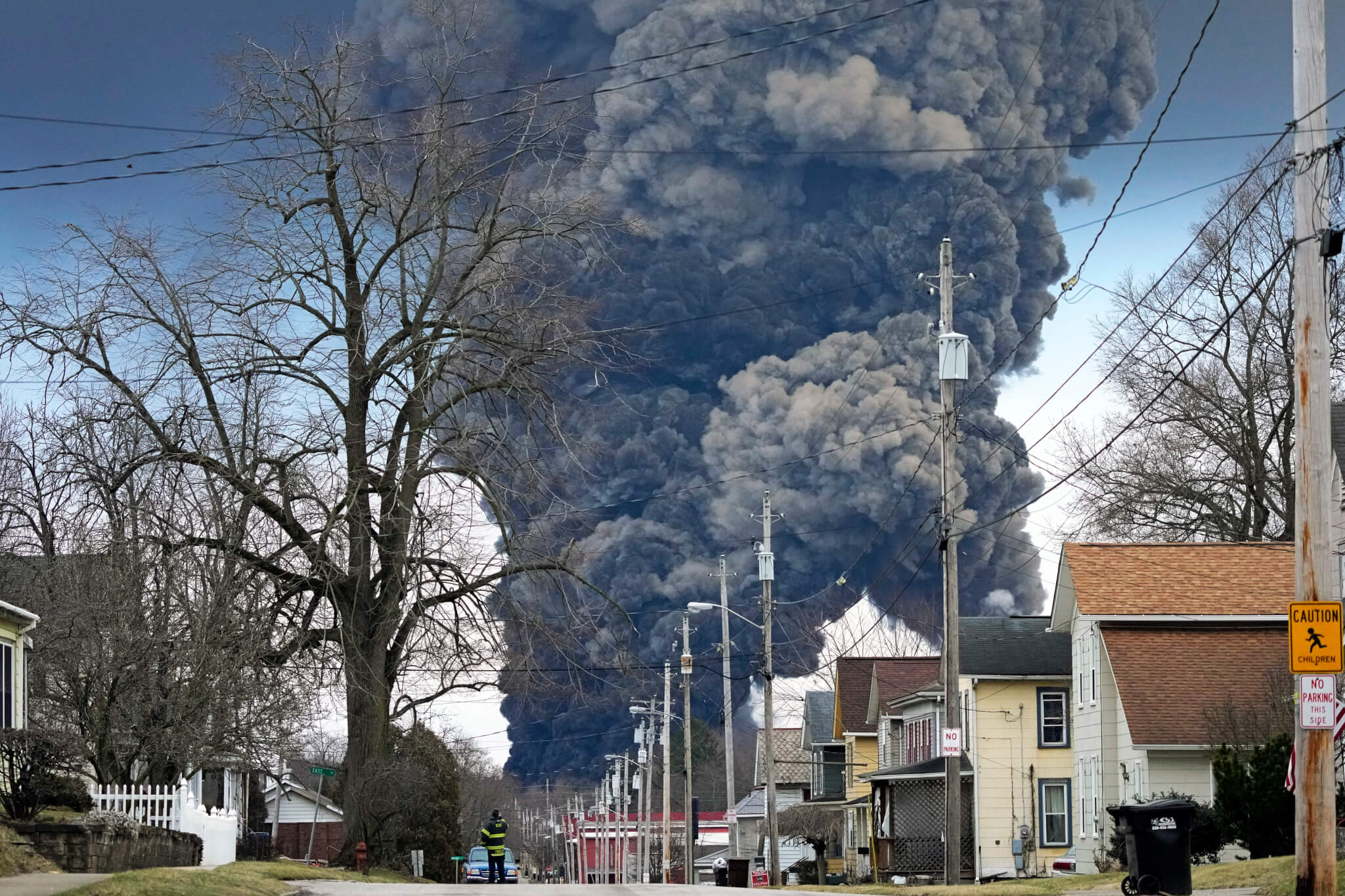
Given the logistics of conducting a general election during the coronavirus pandemic, Election Day is likely to be Election Week or Election Month (Shuttertock/Graphic by COURIER).
With a surge of mail-in ballots expected this year, many states may not be able to declare a winner for days—if not weeks—which means the US could be in store for Election Week, or even Election Month.
For more than 200 years, democracy in the United States has relied on a peaceful transfer of power between presidents. Without it, the country could be plunged into a constitutional crisis. President Donald Trump brought the US one step closer to such an outcome this week, when he refused—on two separate occasions this week—to commit to doing so should he lose the election to Democratic nominee Joe Biden.
“We’re going to have to see what happens,” the president told a reporter during a Wednesday press conference.
His comments, widely criticized by Democrats and some Republicans, echo prior statements in which he refused to say whether he would accept election results that showed him losing.
But the uncomfortable reality is that we are going to have to see what happens in November: The 2020 presidential election will be like nothing we’ve ever seen. With a surge of mail-in ballots expected due to unease about voting in person during the coronavirus pandemic, many states may not be able to declare a winner for days, if not weeks—which means the US could be in store for Election Week, or even Election Month.
This means the long-held tradition of families gathering in front of the television to watch vote counts roll in and a winner be declared is now a relic of the past. Indeed, election experts are warning not to expect an election as usual. But there are things you can do to prepare.
Here’s what you can expect and what you need to know:
We Probably Won’t Know Who Actually Won on Election Night
A record number of Americans—as many as 80 million—are expected to vote by mail this year, and election officials in many states, including the key swing states of Michigan, Pennsylvania, and Wisconsin, currently cannot begin counting those ballots until Election Day. While Democrats in some states are seeking to change those rules to allow ballots be processed or counted earlier, it’s unclear how those battles will play out.
This means a significant number of ballots are unlikely to be counted on Nov. 3, and it could take days, if not weeks to get a full count. Amid concerns that delays at the US Postal Service could affect delivery of ballots, some states are also allowing ballots that arrive late up until a certain cut-off day and time to be counted.
If an equal percentage of Democrats and Republicans voted by mail, this might not have a huge impact, but as James Gardner, a political science professor at the University at Buffalo School of Law told COURIER: “It’s been pretty well-documented that mail-in voting is used more by people who vote Democratic.”
That trend has been turbocharged this year by the pandemic. Meanwhile, on the other side of the aisle, Trump’s relentless and baseless attacks on mail-in ballots have soured Republican voters on voting by mail. A recent poll found that 47% of Biden supporters planned to vote by mail, compared to only 11% of Trump voters. Two-thirds (66%) of Trump supporters intend to vote in person on Election Day, the poll found.
RELATED: Answered: How to Make Sure Your Mail-In Ballot Is Counted
This extraordinary partisan split means it’s likely that as in-person, Election Day votes are counted on Nov. 3, Trump will hold a lead over Biden. But this will be temporary and not indicative of the final result, which will only be known once mail-in ballots are verified and counted.
There Could Be a ‘Red Mirage’ on Election Day Followed by a ‘Blue Shift’ as Mail Ballots Are Counted
This scenario, dubbed the “the red mirage” by Josh Mendelsohn, CEO of the Democratic data firm Hawkfish, could spur Trump to try and preemptively declare victory and falsely allege that any ballots that are counted after Election Day are fraudulent, a scenario that could create a massive legal, political, and potentially even constitutional crisis.
“We are sounding an alarm and saying that this is a very real possibility, that the data is going to show on election night an incredible victory for Donald Trump,” Mendelsohn told “Axios on HBO.”
With his frequent attacks on the validity of mail-in ballots, the president has already signaled that he may declare himself the winner before the count is completed.
This sort of blue shift has happened in recent elections. In 2018 for example, Republican Martha McSally led the Democrat Kyrsten Sinema by 1% in the Arizona Senate race. But after the final 600,000 votes were counted, Sinema won by nearly 3%.
Because of the coronavirus pandemic and the political response to it, Edward Foley, an election law expert at Ohio State University, who coined the term “blue shift,” told the New York Times: “We’re likely to see a significantly dramatic blue shift in multiple states.”
Just how dramatic could this “blue shift” be in 2020? According to a Hawkfish analysis of late-summer poll data, Election Night results could show Trump in the lead, with a total of 408 electoral votes. Four days later, with 75% of the mail-in ballots counted, Biden would take the lead, with 288 electoral votes and, finally, with all the votes counted, the Democrat would win the presidency, with 334 electoral votes, well above the 270 needed to win.
RELATED: Trump Is Trying to Undermine Mail-In Voting. Here Are Five Ways to Ensure Your Ballot Is Counted.
Regardless of the merits of their case, it is likely the Trump campaign will demand that Election Night results be certified and try to have mail-in ballots thrown out. In fact, a legal adviser to Trump’s national campaign all but admitted to The Atlantic that votes counted after Election Day would be challenged, and that Democrats were “asking for it” by encouraging voters to vote safely by mail.
“They’re trying to maximize their electoral turnout, and they think there are no downsides to that,” the Trump campaign advisor, who asked not to be named, told The Atlantic. “There will be a count on Election Night, that count will shift over time, and the results when the final count is given will be challenged as being inaccurate, fraudulent—pick your word.”
A Likely Flood of Legal Challenges May Leave the Election Undecided for Weeks
Republicans, Democrats, and outside allies and political organizations have already been engaged in an unprecedented legal battle over the election for months, with hundreds of lawsuits filed in states across the country regarding rules for the November election. In most cases, Democrats are working to make it easier to vote and ensure every ballot is counted, while Republicans are aiming to implement strict rules to try and prevent the exceptionally rare cases of voter fraud that they falsely believe are far more frequent.
These lawsuits will continue through and after Election Day, when the accuracy of signatures on ballots, the proper use of ballot envelopes, late-delivered ballots, and other issues are likely to be the subject of lawsuits that determine which votes are counted and which aren’t.
“You will still see many claims that absentee ballots have been wrongly rejected, and those will lead to court cases,” Franita Tolson, a professor at the U.S.C. Gould School of Law, told the New Yorker. “The fact that we are generating lots of voting by mail will generate a lot of litigation.”
Both sides have prepared for such a reality. The Biden campaign has built out an enormous legal team of more than 600 lawyers, which includes two former solicitors general, a former attorney general, and an Obama-era White House general counsel. The campaign has also recruited more than 10,000 volunteers for voter protection efforts. Collectively, the operation aims to combat any instances of voter suppression, while also tamping down foreign interference and misinformation that could weaken the Democratic process.
No One Knows How Things Will End
The period between Election Day, Nov. 3, and Inauguration Day, Jan. 20, 2021, could be among the most chaotic and consequential in American history. No one is sure what will happen between those dates, and some election law experts believe that the nation could be headed toward a constitutional crisis with no clear remedy.
“The worst-case scenario is that there’s chaos of some kind,” said Gardner, the University at Buffalo School of Law political science expert, which could lead to a “challenge [of] the legitimacy of the recorded results.” Examples of “chaos,” he explained, might include violence at polling places, unreasonably long lines or voters being turned away because of poor planning or intentional suppression efforts.
The Transition Integrity Project (TIP), a bipartisan election monitoring group made up of political consultants, academics, and former government officials, has also warned there could be “massive unrest” in the United States as mail-in votes are counted over several days after Nov. 3.
“We anticipate lawsuits, divergent media narratives, attempts to stop the counting of ballots, and protests drawing people from both sides,” the group wrote in its June report. “The potential for violent conflict is high, particularly since Trump encourages his supporters to take up arms.” The TIP also expressed particular concern over how the president could use his executive powers to defy the popular vote.
RELATED: WATCH: Samer Ghani Didn’t Vote Until Recently. Here’s Why He’s Pleading With You to Vote Now.
The Trump campaign has reportedly already discussed efforts to invoke Article II of the US Constitution to circumvent official election results by asking state legislatures to appoint loyal electors, who would declare Trump the victor and ignore the will of their own voters.
Such a scenario could play out in any or all of the six key swing states—Arizona, Florida, Michigan, North Carolina, Pennsylvania, and Wisconsin—where the GOP controls both chambers of the state legislature. If those legislatures ignore the official counts that show Biden as the victor and send their own slate of electors to the Electoral College, it could create a conflict without an immediate solution. The Democratic governors of Michigan, North Carolina, Pennsylvania, and Wisconsin would likely certify the official count, which could lead to an outcome where the legislature selects one group of electors and the governor another, creating a conflict when states must submit their final results on Dec. 8.
It’s unclear what would happen in this situation, but if states fail to submit a single set of electors by Dec. 14, when the Electoral College convenes, the decision about their electoral votes goes to Congress.
The election outcome could theoretically wind up before the Supreme Court, which could soon have a 6-3 conservative majority, but Gardner doesn’t believe that Chief Justice John Roberts will want to get involved in the outcome over concerns of damage to the court’s reputation. “If that’s not where it goes then the only place is through a set of political solutions, which would center on Congress,” he said.
The Electoral Count Act of 1887 establishes a roadmap for Congress to follow to resolve such a dispute, but the law has been criticized as being “confusing,” “strange,” and “unintelligible.”
In this scenario, the new Congress would gather on Jan. 6 to determine which set of results to accept from each state and certify the Electoral College tally. But no one knows exactly what would happen, and the possibility for conflict is significant, especially if Democrats retain the House and Republicans retain the Senate. If neither candidate obtains the necessary 270 electoral votes after Congress meets, then the final decision would appear to go to the House of Representatives. Each state delegation would get one vote, and if it comes to this—barring a blue tsunami in November—Republicans are all likely to carry the day, as they control 26 delegations, while Democrats control only 23, with one tied.
That this sort of chaotic outcome is no coincidence, Gardner said. Instead, he said it’s a “deliberate political program” by the Republican Party.
“It’s pretty well-documented by political scientists that this is not a party of democratic contestation anymore,” he said. “This is a party that’s leaning towards authoritarianism, that does not see the need to observe rules of fair political competition because they don’t think that fair political competition is what Democrats are entitled to. So that’s why we’re in the shape that we are.”
What You Can Do to Help Avoid Such Chaos
This is a lot to process, but there are things you can do to prepare.
If you’re voting by mail, election experts and US Postal Service officials advise that you request and return your ballot as soon as possible. Most states also allow you to drop your ballot off at your local election office or polling site and many others have ballot drop boxes, which provides a safe, secure, and convenient alternative for voters to return their ballot. The boxes are locked, anchored in place, and typically under video surveillance or physical protection. Election officials directly collect ballots from these boxes, removing the USPS as a middleman. Check with your local election office to see if there are ballot drop boxes in your community.
Other steps people can take to help ensure a smooth election are to volunteer as poll workers, and prepare themselves, their friends, and family to not have a winner on Election Night.
Perhaps the best thing you can do, however, is where possible, to vote in person, whether early or on Election Day.
“It would be a good decision for anyone who can accept and then carefully manage the risk to actually vote in person. The more in-person voting there is, the less opportunity there’s going to be for problems arising from the Postal Service and problems arising from processing of ballots,” Gardner said. “The sooner we’ll know the results, the fewer the links in the chain and therefore the fewer the possible challenges can be in court.”
READ MORE: How to Prepare for In-Person Voting If You Have COVID-19 Anxiety
Politics

Influencers and creators find new ways to engage young Philadelphia voters
Rec Philly, a space for creators and influencers, teamed up with Show Up Strong to get hundreds of young Philadelphia residents engaged in the...

New Biden rule protects privacy of women seeking abortions
Under the new rules, state officials and law enforcement cannot obtain medical records related to lawful reproductive health care with the goal of...

Biden marks Earth Day by announcing $7 billion in solar grants
The Biden administration on Monday announced the recipients of its Solar For All Program, a $7 billion climate program that aims to lower energy...
Local News

Conjoined twins from Berks County die at age 62
Conjoined twins Lori and George Schappell, who pursued separate careers, interests and relationships during lives that defied medical expectations,...

Railroad agrees to $600 million settlement for fiery Ohio derailment, residents fear it’s not enough
Norfolk Southern has agreed to pay $600 million in a class-action lawsuit settlement for a fiery train derailment in February 2023 in eastern Ohio,...






